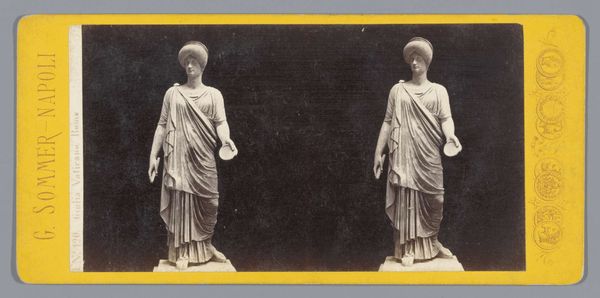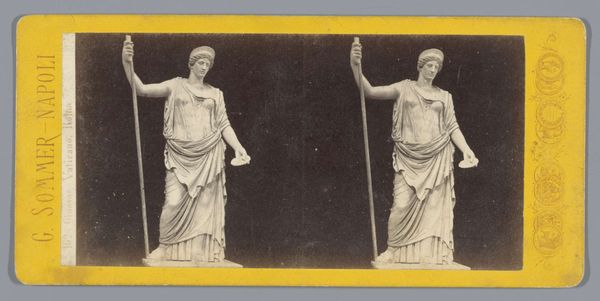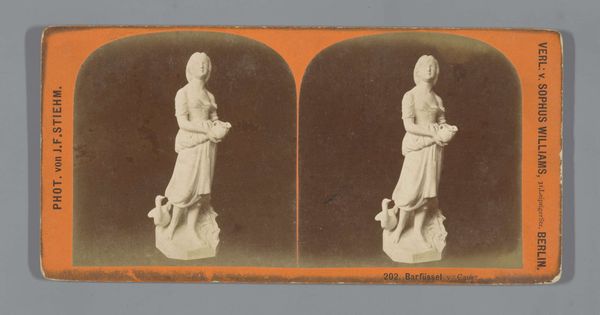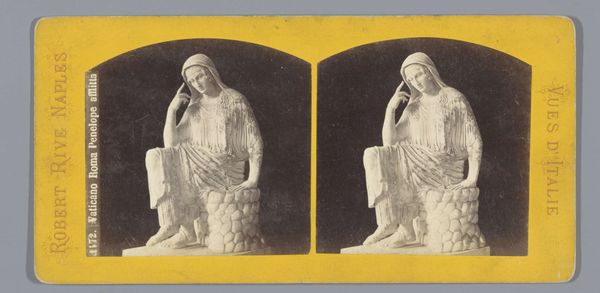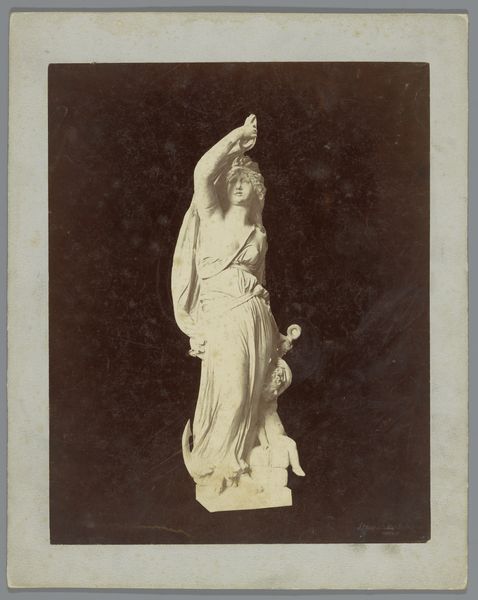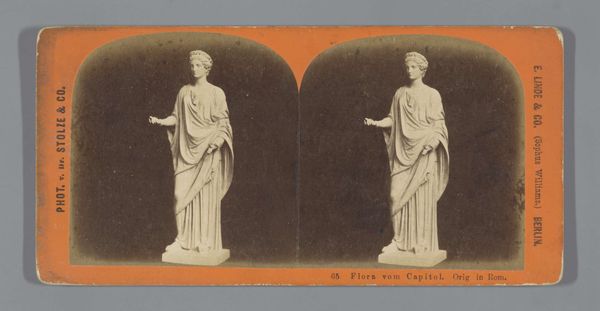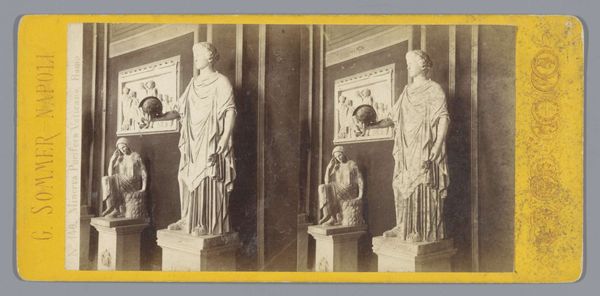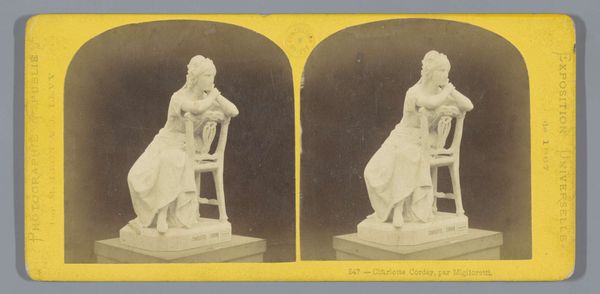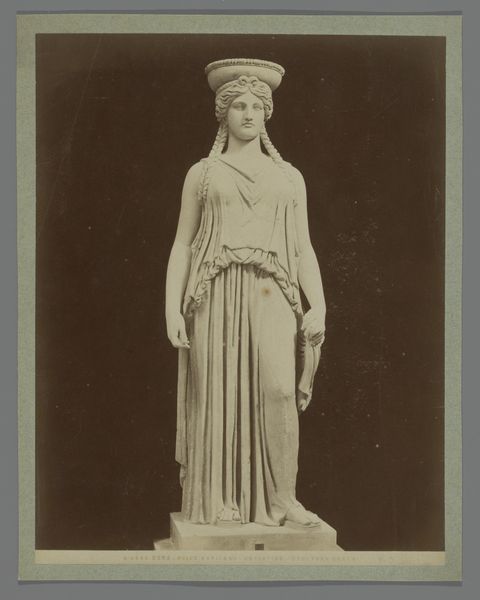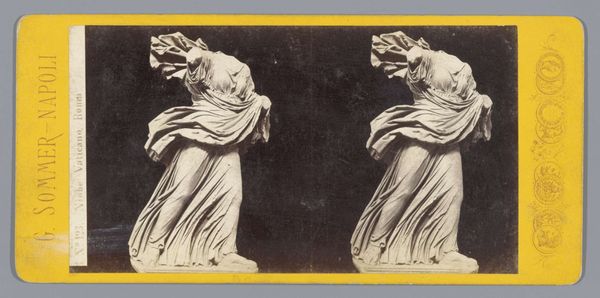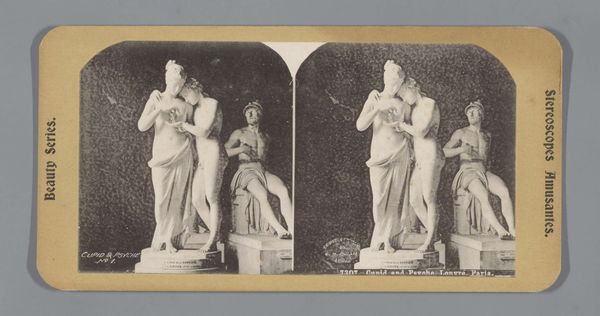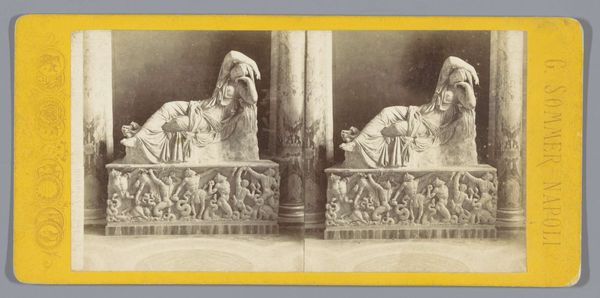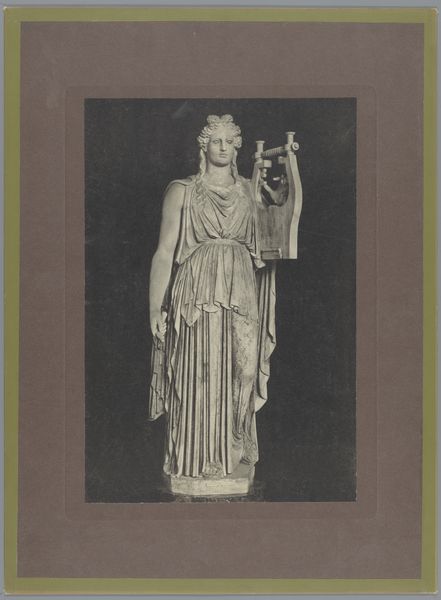
photography, sculpture, gelatin-silver-print, marble
#
portrait
#
statue
#
greek-and-roman-art
#
photography
#
ancient-mediterranean
#
sculpture
#
gelatin-silver-print
#
marble
Dimensions: height 84 mm, width 177 mm
Copyright: Rijks Museum: Open Domain
Curator: It strikes me as ethereal, this old photograph. It's the soft greys and blacks against the warm card, the suggestion of antiquity... it just has this hauntingly delicate air, like holding a dream. Editor: It’s also worth looking at how the piece represents a photographic study of the sculpture of Fortuna currently residing in the Vatican Museums. It's a gelatin silver print, created sometime between 1860 and 1880 by Giorgio Sommer, now in the collection of the Rijksmuseum. The symmetry of the photograph seems deliberate, enhancing the statue’s sense of balance and... power, really. Curator: Oh, absolutely. The duality! On either side of the image we see the goddess Fortuna standing poised with what looks like a cornucopia brimming with fruit, or maybe it’s flowers – promising abundance. And is that a rudder I spot beside her? Editor: Indeed! The rudder symbolizes Fortuna's control over destiny, steering the course of life. What’s compelling here is Sommer's choice to document Fortuna, and specifically to reproduce a sculpture derived from classical, Greek and Roman ideals, a time rife with political and social upheaval reflected in the iconography of deities, as symbols of power and resistance. Curator: So the original sculpture itself wasn’t necessarily a passive aesthetic choice back then? Like pinning up a pretty picture on your wall to match your curtains, that type of vibe? Editor: By no means. What's crucial is the way that photographic technologies democratized access to classical art. Sommer wasn’t simply reproducing an image; he was disseminating a narrative, giving a wider audience the chance to contemplate ideas of fate, wealth, and governance. It is no accident these photos circulated at the rise of nation-state formation in Europe! Curator: Interesting. It gives a whole new layer to viewing. To think it's not merely an attractive statue, but almost an emblem—pregnant with sociopolitical significance! It is strange how the ancient world and the "modern" era mingle. That’s something I find eternally enchanting about museums, you know? We gather pieces, and echoes of the past help us navigate the currents of today...and perhaps, even influence what might wash upon our shores tomorrow. Editor: Exactly! Seeing the work through your intuitive lens, and by then connecting it to broader societal questions -- this really illuminates the statue of Fortuna. We must confront how visual culture preserves memory and propagates dominant ideologies, while offering avenues for resistance. It gives us the capacity to question the tides that define us and to imagine alternative routes.
Comments
No comments
Be the first to comment and join the conversation on the ultimate creative platform.
